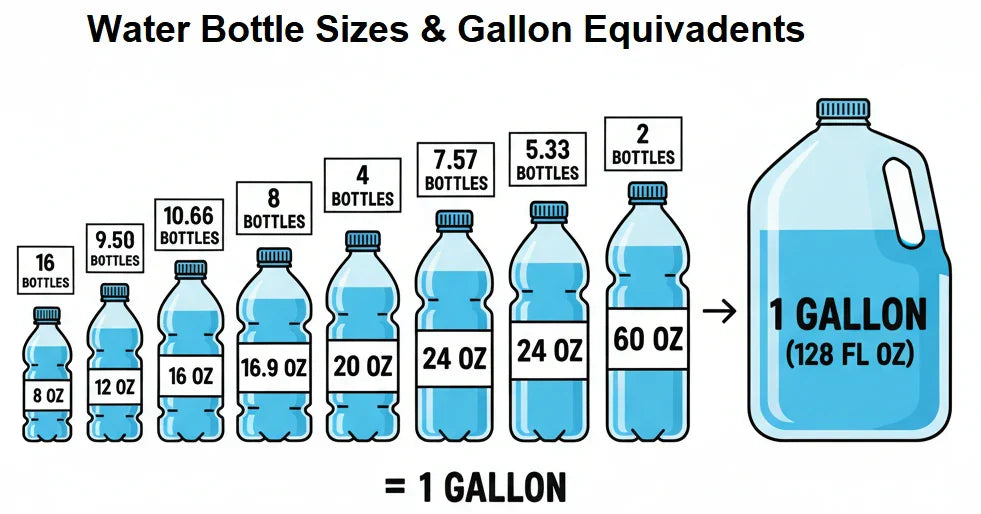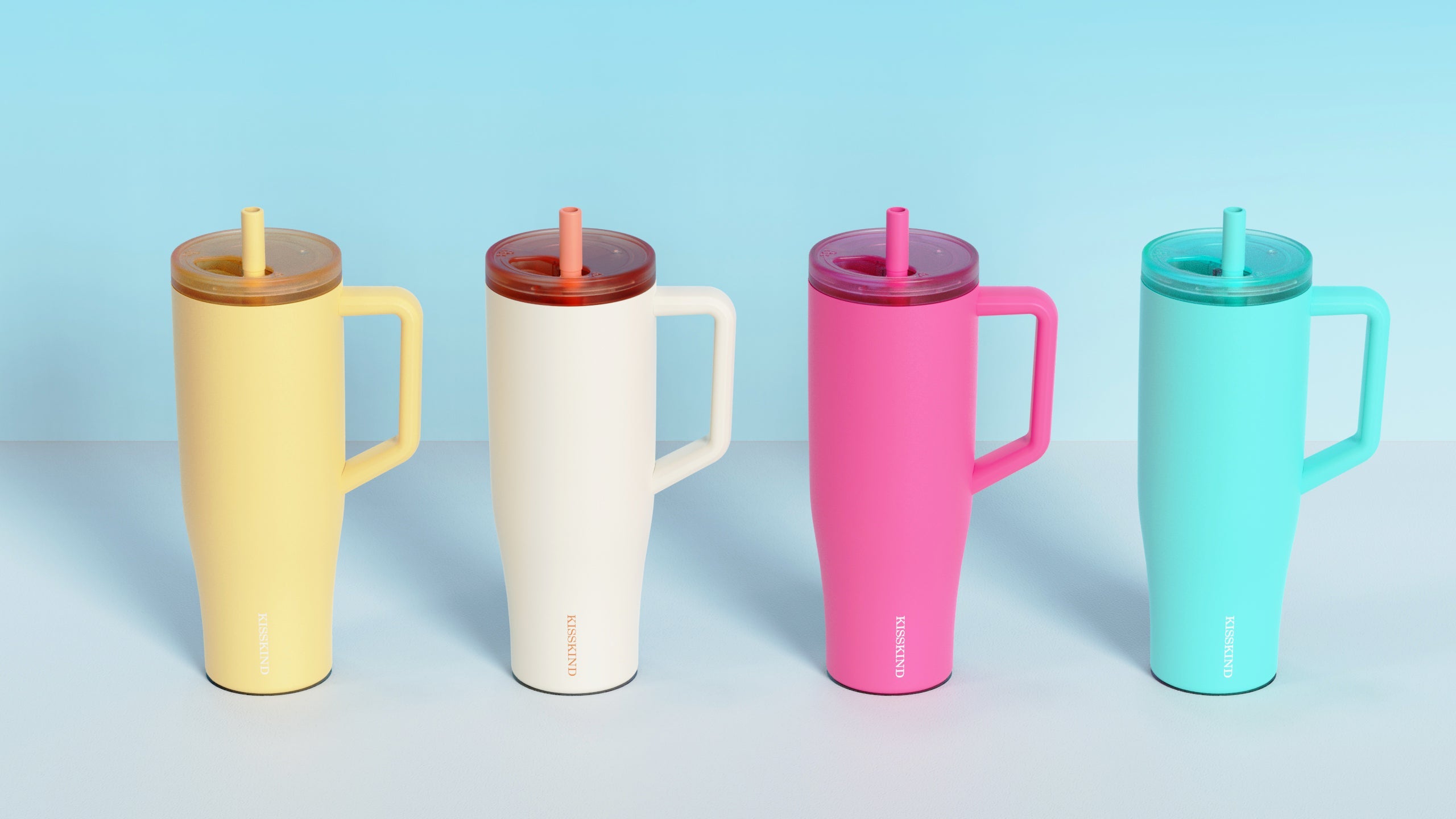Table of Contents
- Introduction: Why This Question Matters
- Understanding Gallons and Bottles
- Common Bottle Sizes in the U.S. and Their Uses
- Bottle-by-Bottle Breakdown
- How to Convert Bottles to Gallons
- Practical Applications and Tips
- Real-Life Case Studies
- Importance of Accurate Bottle-to-Gallon Knowledge
- Health and Hydration Insights
- Environmental Considerations
- Frequently Asked Questions
- Additional Resources and Tools
- References
- Share This Article
1. Introduction: Why This Question Matters
Understanding how many water bottles are in a gallon is more than a trivial curiosity. From personal hydration to event planning and fitness routines, knowing the exact conversion ensures efficiency and accuracy. Many individuals and organizations underestimate their water needs, leading to insufficient hydration, higher costs, or unnecessary waste.

2. Understanding Gallons and Bottles
2.1 What is a Gallon?
The U.S. gallon equals 128 U.S. fluid ounces, whereas the Imperial (UK) gallon equals 160 fluid ounces. Most hydration-related questions in the United States refer to the U.S. gallon. Understanding gallons is foundational for converting between bottles and gallons accurately.
2.2 Why Bottle Sizes Vary
Water bottles vary in size due to different use cases:
- 8–12 oz: Travel, children’s bottles, quick sips
- 16–20 oz: Gym, office, daily use
- 32–40 oz: Home, fewer refills, bulk hydration
- 64 oz+: Camping, long events, minimal refill frequency

3. Common Bottle Sizes in the U.S. and Their Uses
| Bottle Size | Ounces | Typical Use |
|---|---|---|
| 8 oz | 8 | Kids, small sips |
| 12 oz | 12 | Portable beverages |
| 16 oz | 16 | Gym, office, daily hydration |
| 16.9 oz | 16.9 | Most commercially sold bottled water |
| 20 oz | 20 | Travel, quick refills |
| 24 oz | 24 | Office or long meetings |
| 32 oz | 32 | Moderate bulk, reusable |
| 40 oz | 40 | Outdoor activities or events |
| 64 oz | 64 | Bulk consumption, camping |
| 128 oz | 128 | Full gallon reference |
People frequently search queries like “how many 16.9 oz bottles make a gallon” or “how many 40 oz bottles make a gallon”. This knowledge supports planning and hydration tracking.

4. Bottle-by-Bottle Breakdown
| Bottle Size | Ounces per Gallon | Number of Bottles per Gallon |
|---|---|---|
| 8 oz | 8 | 16 bottles |
| 12 oz | 12 | 10.67 bottles (~11) |
| 16 oz | 16 | 8 bottles |
| 16.9 oz | 16.9 | 7.57 bottles (~8) |
| 20 oz | 20 | 6.4 bottles (~6–7) |
| 24 oz | 24 | 5.33 bottles (~5–6) |
| 32 oz | 32 | 4 bottles |
| 40 oz | 40 | 3.2 bottles (~3–4) |
| 64 oz | 64 | 2 bottles |
Each entry includes the exact calculation and approximate rounding for practical use. For example, 7.57 of 16.9 oz bottles make a gallon, meaning you would need 8 bottles to slightly exceed a gallon.

5. How to Convert Bottles to Gallons
Follow these steps:
- Identify the bottle size in ounces (oz).
- Divide 128 (1 U.S. gallon) by the bottle size.
- Round up if necessary for practical use.
- Use a volume converter for precise measurements. Example: Kisskind Volume Converter.
For instance, 128 ÷ 16.9 = 7.57, so approximately 8 bottles are needed.
6. Practical Applications and Tips
- Home hydration planning for families
- Fitness and gym routines
- Events and parties, ensuring sufficient water supply
- Meal planning for large groups
- Outdoor and camping preparation
Practical tips include storing bottles in a cool area, pre-filling reusable bottles, and tracking consumption to meet hydration goals.

7. Real-Life Case Studies
Case 1: Office hydration program using 16.9 oz bottles. Each employee gets 8 bottles per gallon per day. Over 20 employees, this ensures precise consumption tracking.
Case 2: Outdoor event with 64 oz reusable bottles. Organizers calculate total gallons needed using bottle conversions to reduce waste.
8. Importance of Accurate Bottle-to-Gallon Knowledge
Accurate conversions reduce:
- Water wastage
- Unexpected shortages
- Over-purchasing costs
It also enhances personal health and supports environmentally conscious practices.
9. Health and Hydration Insights
Recommended daily water intake varies by age, weight, and activity level:
- Adults: 2–3 liters (~8–12 cups)
- Children: 1–1.5 liters (~4–6 cups)
- Active adults: up to 3.7 liters for men, 2.7 liters for women
Tracking using bottle conversions can help individuals meet these targets reliably.
10. Environmental Considerations
Using larger reusable bottles reduces plastic waste. For example, replacing 16.9 oz single-use bottles with a 32 oz reusable bottle halves daily plastic consumption. Accurate bottle-to-gallon calculations assist in planning eco-friendly hydration strategies.
11. Frequently Asked Questions (FAQs)
- How many 16.9 oz bottles make a gallon?
- Approximately 7.57 bottles (~8 bottles for practical purposes).
- How many 20 oz bottles are in a gallon?
- 6.4 bottles (~6–7 bottles).
- Can I use this conversion for non-water liquids?
- Yes, as long as the liquid’s volume is measured in ounces, the calculation remains valid.
- Why is it important to know bottles per gallon?
- It helps in planning hydration, budgeting, and minimizing waste.
- How many 64 oz bottles are in a gallon?
- 2 bottles per gallon.
- How many bottles of water should I drink daily?
- Depends on size; using 16.9 oz bottles, adults typically need 8–12 bottles per day.
- How to track hydration efficiently?
- Use reusable bottles and check-off systems or hydration apps. Consider using the volume converter.
12. Additional Resources and Tools
- 1.5 Liters to Oz
- How Many Liters is 40 oz
- 40 oz to Cups Conversion
- Best Insulated Water Bottles
- Lumi Spin Smart Bottle
13. References
- CDC Hydration Guidelines
- Mayo Clinic Water Intake Recommendations
- U.S. National Academies of Sciences: Dietary Reference Intakes





